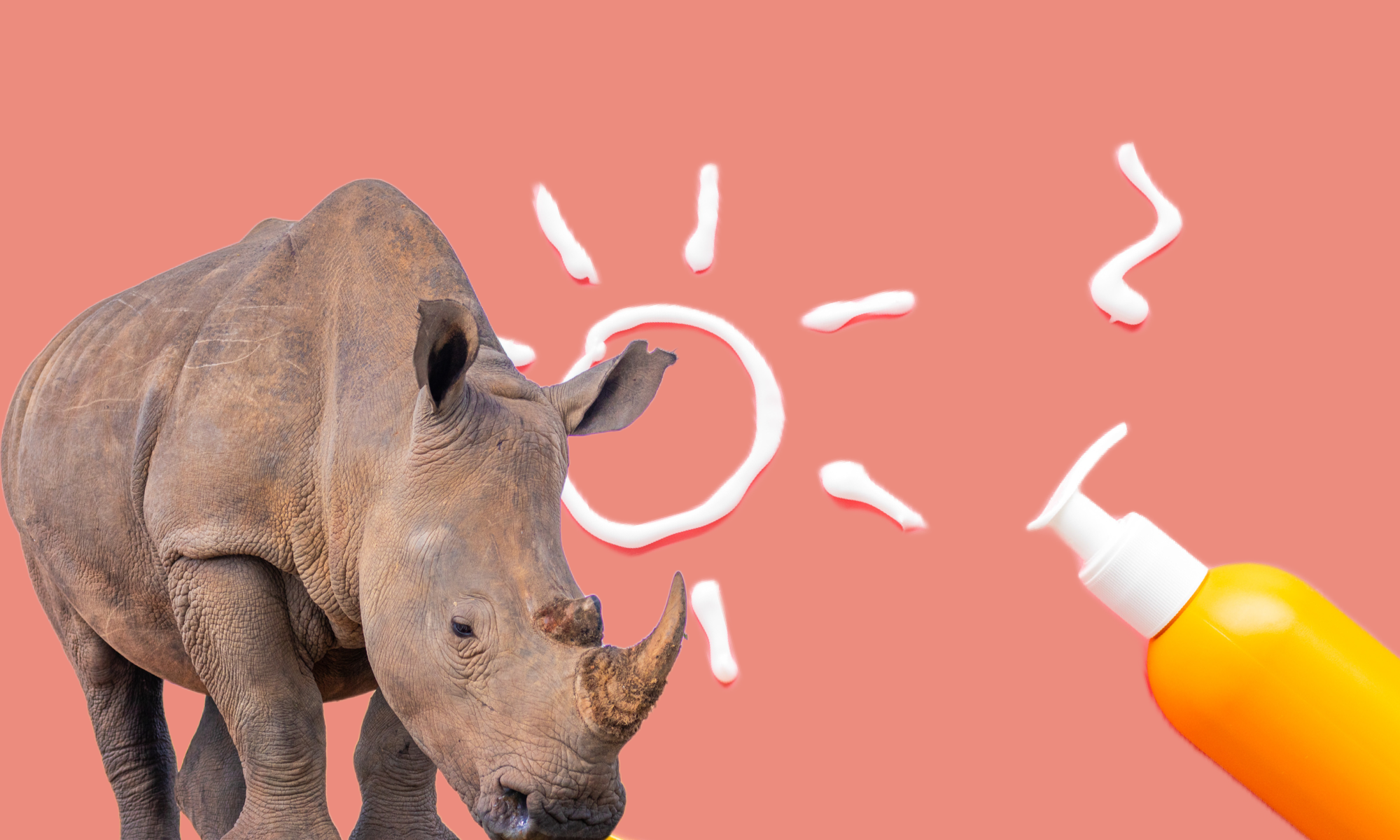Your cart is currently empty!
The boundary from sun-kissed to sun-pissed can be pretty blurry, but we all know when we’ve crossed it. One moment you’re feeling like a warm cookie, the next like you’ve been scalded by fresh coffee.
Unfortunately for humankind, all of us can get burned by the sun.
Fortunately for humankind, we have ways of protecting ourselves.
But ask yourself, when was the last time you saw a roseate rhinoceros, a bronzed bunting, or a peeling porcupine? Can other animals get sunburns?
Fish have scales and the protection of the water. Birds have feathers. Reptiles have scales and, besides, their cold-blooded nature means they’d die from overheating long before a sunburn occurred. Fluffy animals tend to be pretty well protected by their fur. Outside of that, all it really takes is exposed skin, like your doggo’s nose.
Perhaps pigs, elephants, and rhinos are the first to come to mind. Sure, they have exposed skin, but they’ve also developed some super effective strategies for protecting themselves. Wallowing in the mud, coating themselves in dust, or, you know, standing in the shade. In fact, most animals you might think get regularly roasted are pretty well protected, physically, behaviorally, or both.
Whales, dolphins, and other cetaceans are perhaps the biggest exception and have been known to get regular sunburns, but they tend to heal up fairly quickly.
You might expect the same for Manatees and Dugongs because they tend to be in shallow, warm waters. Plus, they are usually pretty slow. They’re practically a floating baked potato. Yet they also tend to have algae growing on their backs which tends to have a shield-like effect.

Hippos are another big naked behemoth of a creature, however, they have hippo sweat.
It’s not like your usual sweat. This kind is better, more hippo-y.
I’ll explain. Hippos secrete a red, oily liquid filled with microscopic particles which are able to scatter UV. It’s basically a highly effective, all-natural sunscreen, and that’s not all. A hippo sweat a day keeps the insects away. Plus, this all-in-one power-sweat also has antiseptic properties.
Yet, of course, like most all sweat, it’s a bit on the smelly side.
Nevertheless, Hippo sweat is being heavily studied for its potential to inform how we design sunscreens and even some cosmetics.
So, to definitively answer the original question, yes, animals can indeed get sunburned. Most, however, are adapted well enough physically, behaviorally, or both to avoid such a fate.
Perhaps it isn’t our skin or overall biology that is the problem, but our overall out-of-touch-ness with our instincts and with nature. Surely, we have a lot left to learn, but there is something to be said about getting back to basics, and remembering where we came from.
Support The Wild Life for as little as $1 per month

The Wild Life was created in January of 2017 by, me, Devon Bowker (He/They) after finishing my degree in wildlife biology. It’s been amazing to see how things have changed over the past 5 years, both personally and here. I have tons of ideas and projects in the works and cannot wait to share them with you. Whether you’re a long-time follower or new to The Wild Life, thank you for being here.


Leave a Reply